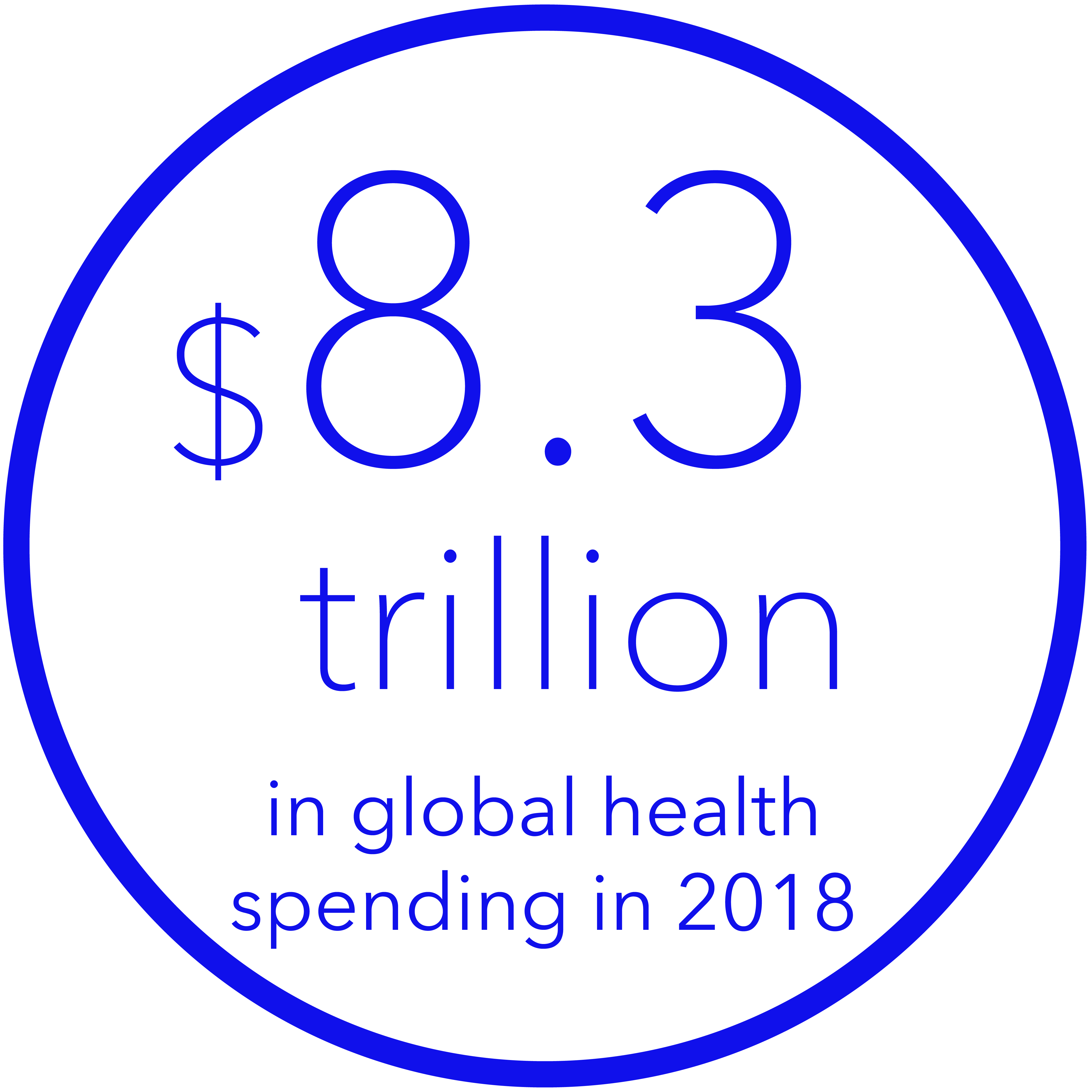

Future of healthcare
Our bold ambition
Tackling the greatest challenges facing our world
Healthcare is deeply personal. From welcoming a newborn baby to caring for an aging parent: Our most precious, emotional, and trying moments are directly tied to healthcare.
And yet healthcare isn’t “healthy” right now.
Millions of people around the globe continue to suffer the effects of complex and challenging health conditions. Life’s ordinary moments are stolen each day. A walk to the local market. Watching a grandchild score their first goal. Or having a conversation over coffee.
For many, these events are more than an arm’s reach away. For some, they’re replaced with the burden of managing multiple insulin injections. For others, it’s hours transporting loved ones to and from care appointments. And in the worst scenarios, ordinary life is consumed by disease that makes even picking up a glass of water an impossible task.

The burden of disease does not only bring great personal cost; there are great societal costs as well. Spending is going up, not down. Between 2010 and 2018, global spending on health rose continually, reaching $8.3 trillion or 10% of global GDP.1
There’s more — people are going into hospitals sicker than ever. Comorbid conditions affect people of color at unacceptable rates. We’ve become too dependent on prescription medication. And all of this is further compounded by issues of access: More than 40% of the global population cannot reach healthcare by foot within one hour.2
We have a wealth of technology at our fingertips. We must harness this to address the challenges of today. Discover conditions earlier. Treat them earlier. Reduce disparities in care. And ensure there is equal access to care for all. Society demands it — and deserves it. The world can’t wait for someday. We need to act today, especially in light of some disturbing trends.
The pandemic has been a wakeup call, demonstrating how tightly health and wealth are connected. As costs have skyrocketed, governments are facing a looming bill. And against the backdrop of the pandemic, chronic disease has taken a backseat.
Chronic diseases kill 41 million people each year. That represents nearly three quarters of all deaths globally.3 Cardiovascular diseases, cancers, respiratory diseases, and diabetes make up 80% of all chronic disease deaths.3 And many of these are preventable — or at least treatable, when caught early. Our progress in overall life expectancy is slowing down. While people are living longer, they’re also living more years in poorer health.4
The rise in chronic disease in both developed and developing countries represents a slow-moving disaster. And while this crisis may not make as many daily headlines as the pandemic, it’s real — and it’s scary.
To counter these trends, we need to redefine what and how healthcare can deliver. We need to set and achieve higher standards. Which requires far-reaching vision and pacesetting partnerships.
It requires companies like Medtronic to rethink our potential, and rethink the speed and scale at which we can serve the world. As a leader in healthcare technology, our products and services have improved — and continue to improve — the lives of millions of people every day, in fact two people every second of every hour of every day. But we must do more.
We can help more people, in more meaningful ways, more quickly. While some are benefiting, too many are not. This is our urgent responsibility.
Imagine a world where:
We are inspired by what’s possible but hasn’t yet been achieved.
The right thing to do for our world and the best thing for our business are one and the same. We need to reset our expectations of what innovation can achieve, driven by why we innovate in the first place: to improve human welfare. To do this, we will embrace our leadership potential.
That’s our bold ambition: To become the global leader in healthcare technology.
As a global leader, it’s our responsibility and commitment to tackle the most complex health and societal challenges facing our world today. And we’re putting a stake in the ground. We’re going beyond devices to help technology serve more people in more ways than ever before.
Driven by this bold ambition, we’re making sure the structure of our business matches our goal. We’ve evolved our operating model to get closer to our customers and to eliminate barriers to moving with speed. We’ve changed our culture to make bold moves and double down on our commitment to quality and patient safety.
Download the PDF: Our bold ambition
Watch the event: Our bold ambition with Chairman & CEO Geoff Martha
To meet the needs of a changing world, we’re pushing innovation even further in four ways.

The human body is the most complex operating system on the planet. Designing solutions to heal it requires not only engineering determination but also a profound understanding of human anatomy. We’re committed to creating life-transforming innovation, not just incremental innovation.
When our co-founder Earl Bakken developed the first battery-powered pacemaker in the late 1950s, it was revolutionary. Today, technology can perform medical marvels we never imagined. Someone living with Parkinson’s who can finally hold their morning coffee with a steady hand. Relief from chronic pain so someone can play with their children. It’s clear: Groundbreaking technologies expand what’s possible.
But technology alone can’t solve the challenges we face today.

Because healthcare is personal, we must put people first. We’re committed to delivering the best possible experiences for every patient, physician, and caregiver we serve.
Hospitals are struggling with capacity, and clinicians are overwhelmed. At the same time, patients expect more from their care. They expect — and deserve — experiences that help them recover faster and return home more quickly.
Whether it’s the world’s smallest pacemaker or a tiny capsule that lets doctors see inside your digestive tract, minimally invasive approaches result in a speedier recovery, less risk of infection, and less time in the hospital.5-7
Putting people first means health systems can be more efficient and patients can get back to doing what they love most. And putting people first is a commitment that extends to our global team of more than 90,000 passionate workers. We’re creating an inclusive, diverse culture of belonging. Beyond being the right thing to do, we know it’s good for business and will help us continue to deliver the life-transforming therapies patients deserve.

Combatting the world’s most complex healthcare challenges also requires reaching millions more patients. Not just every year, but every day.
We’re committed to using data and artificial intelligence (AI) to both accelerate and achieve new scale, making healthcare more predictive and more personal. The pace of technology innovation is accelerating. AI is becoming pervasive in our daily lives — from smart phones to smart homes. And we’ll demand that healthcare keep pace.
Driven by advancements in computational power, we’re seeing communication networks, sensors, robotics, virtual reality, and AI exponentially improving. These advancements are enabling the development of smart medical devices, and it’s data that will drive them. For example, imagine a diabetes insulin pump that learns your patterns and gives you personalized guidance to better manage your insulin.
The potential goes beyond improving the performance of individual devices. There is vast opportunity to improve medical care overall. With the advent of 5G, we can transport data faster — like millions of images and videos from surgeries around the world to train other physicians. Of course, caring for the health of patients also means caring for their health data. As data is used to unlock better outcomes and brighter futures, we will be fervent protectors of the data entrusted to us.

Perhaps the greatest thing holding back our global promise is access to healthcare.
To make healthcare work for all, we have to democratize it. We have to make it more accessible. Like the internet, healthcare is everywhere — but not everyone has access. In emerging markets, lack of infrastructure, awareness, and medical training are a real challenge. The World Bank and World Health Organization found that in 2017, half of the global population lacked access to essential health services.8 But even in the United States there are great disparities. Access to care shouldn’t be a luxury based on your location in the world or the color of your skin. We’re committed to expanding healthcare access. And to delivering positive outcomes that go far beyond our products.
It’s clear that governments cannot meet this challenge alone. And there are high expectations for businesses to step in and fill the void. Through innovation, partnerships, education, and advocacy, we focus on improving healthcare access. Putting people first by designing life-transforming technology that advances care and quality of life while reducing overall costs. Removing structural and social barriers to healthcare by investing in capacity-building for medical professionals, supporting nonprofits, and NGOs. And mobilizing to reduce healthcare disparities through on-the-ground collaboration with government, healthcare, and community leaders.
Our products — and our commitment to patient safety and quality — will continue to receive our unrelenting focus. But we also know that the effects of global climate change threaten peoples’ ability to live healthy and prosperous lives. And that the actions we take today to improve the health of the planet contribute to the wellbeing of future generations. That’s why we apply our engineering mindset to innovate for sustainability, from going carbon neutral in our operations by FY30 to reducing the environmental impact of our products.
Tackling the biggest healthcare challenges won’t be easy. Then again, things worth fighting for never are.
The world needs the power of grit, determination, and urgency. Innovation and then some. In other words, the mindset of an engineer. So we’re tapping into our problem-solving legacy.
After all, in its modern interpretation, we are all engineers, regardless of our professional titles — every one of us experiments, creates, builds, and improves. We’re also recommitting ourselves to why we innovate. Our Mission holds us to extraordinary expectations across both what we do and how we do it. Its first five words echo in our minds daily: to contribute to human welfare.
We’re confident in our ability to achieve our bold ambition to become the global leader in healthcare technology. Because we’re compelled to share many more stories like this one.
Some say, “The only way to predict the future is to create it.” The world needs leaders right now to deliver on the extraordinary future we know is possible.
Not someday, but this day.
At Medtronic, we are engineering the extraordinary.
Explore topics:





